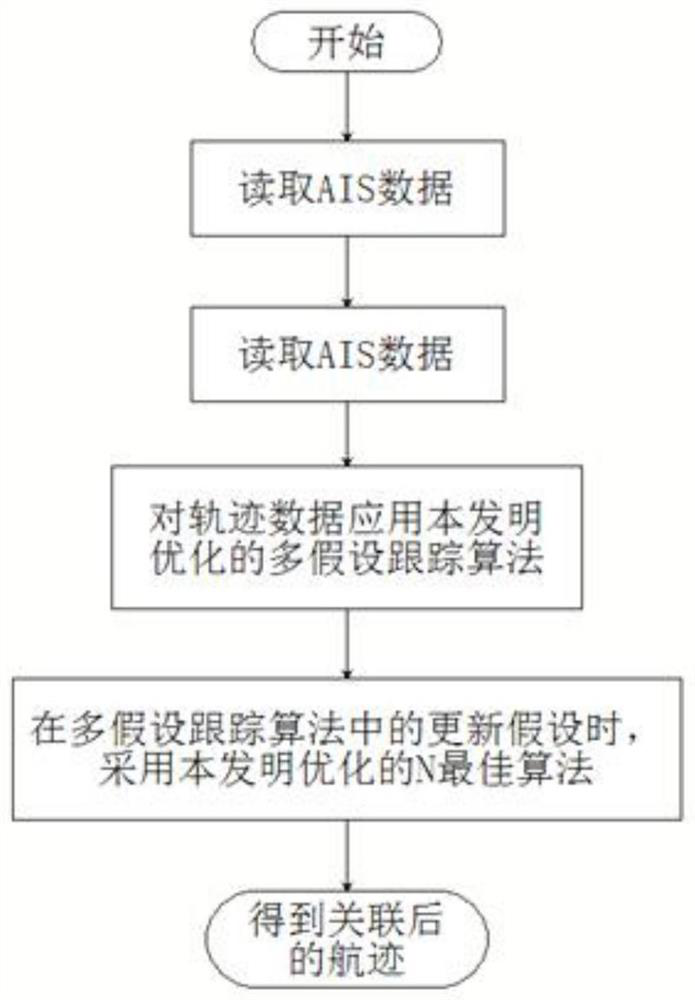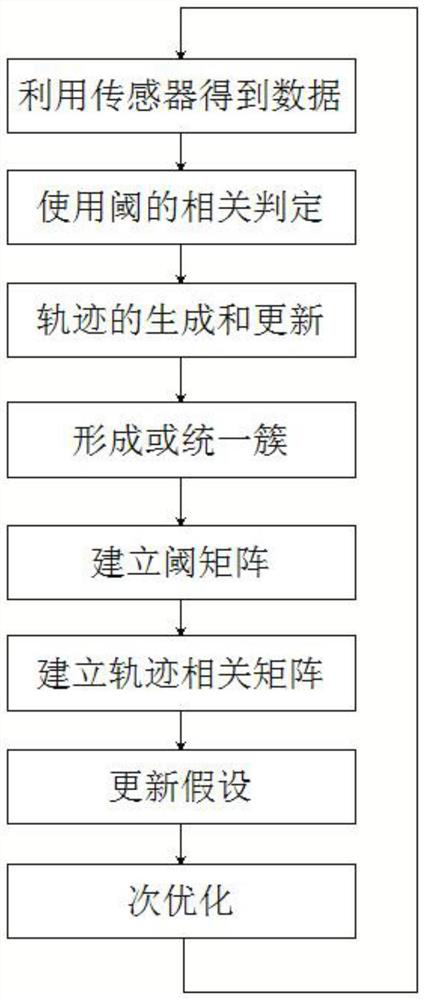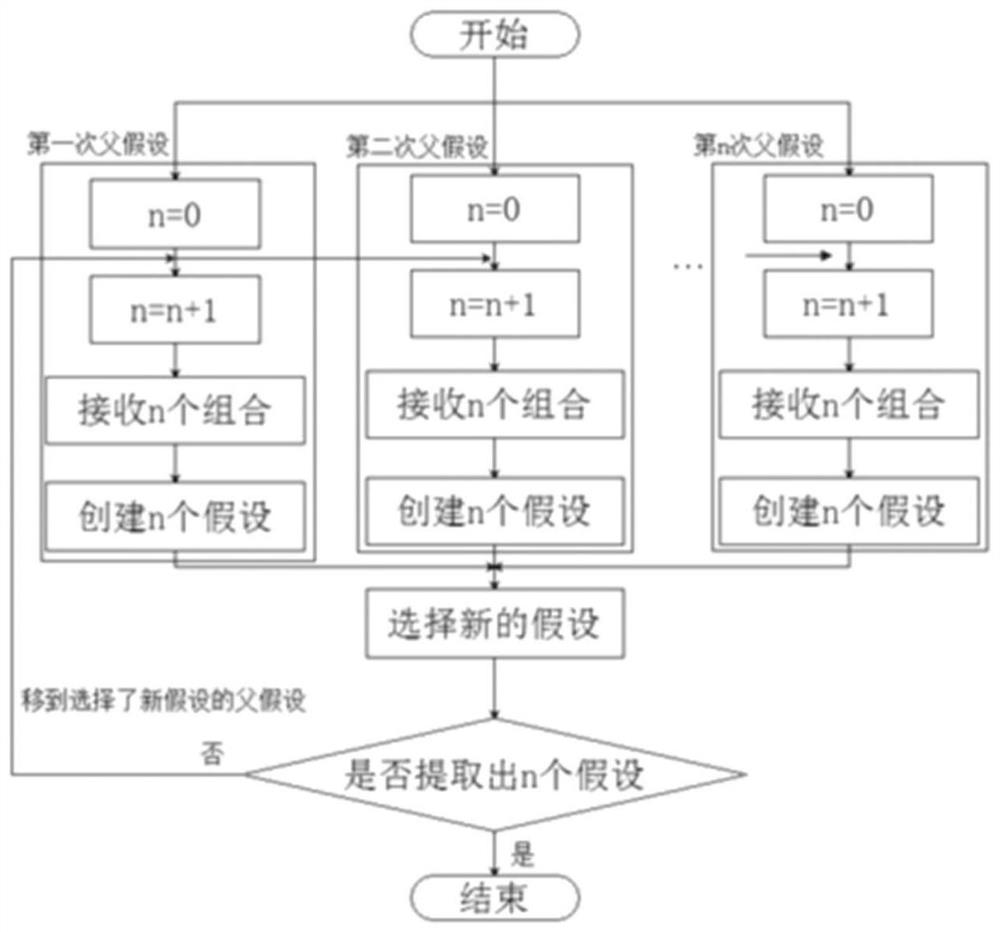Trajectory-oriented calculation time reduction method based on multi-hypothesis tracking algorithm
A tracking algorithm and computing time technology, applied in the field of multi-hypothesis tracking, which can solve problems such as a large amount of computing time and memory resources
- Summary
- Abstract
- Description
- Claims
- Application Information
AI Technical Summary
Problems solved by technology
Method used
Image
Examples
Embodiment Construction
[0087] The invention is mainly based on a large amount of AIS data as basic data, and at the same time improves the multi-hypothesis tracking algorithm and the N best algorithm. The specific implementation method is as follows
[0088] Step 1: Obtain the AIS data of a large number of ships through sensors, usually CSV files or EXCEL files, import the data into the mysql database, and design the table structure.
[0089] Step 2: Preprocessing the AIS data. First, process the data with wrong format, read the data from the database, first traverse the data, check the data length and data format of each piece of data, whether it conforms to the definition, and delete the ones that do not meet the definition.
[0090] Step 3: Use the trajectory-oriented multi-hypothesis tracking algorithm to track the trajectory in the AIS data. Each hypothesis is formed from a set of trajectories, and each trajectory is formed from a time series of measurements.
[0091] Step 3.1: First, the th...
PUM
 Login to View More
Login to View More Abstract
Description
Claims
Application Information
 Login to View More
Login to View More - R&D
- Intellectual Property
- Life Sciences
- Materials
- Tech Scout
- Unparalleled Data Quality
- Higher Quality Content
- 60% Fewer Hallucinations
Browse by: Latest US Patents, China's latest patents, Technical Efficacy Thesaurus, Application Domain, Technology Topic, Popular Technical Reports.
© 2025 PatSnap. All rights reserved.Legal|Privacy policy|Modern Slavery Act Transparency Statement|Sitemap|About US| Contact US: help@patsnap.com



